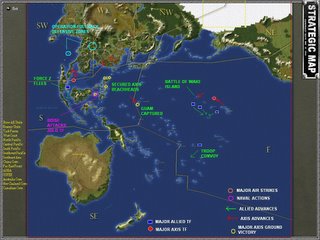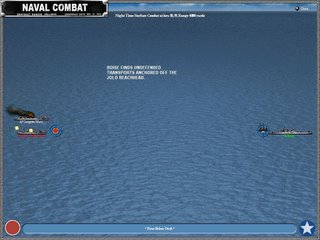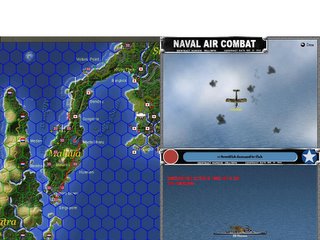Fighting continues another day in China. Phillipino forces retreat in Mindinao!
ACTION SUMMARY: Fighting continued in China today as the Japanese continued their enveloping movement on Changsha. Chinese divisions on all fronts near Changsha have been withdrawing from their trenches and had been making excellent pace on their marches. Meanwhile, intelligence reported three more divisions of the Japanese Kwantung Army marching directly on Changsha from 70 miles away.
Ground fighting in Malaya continued near Georgetown as the Fullback convoys there and at Victoria continued their evacuation throughout the day. In continuing defiance, the RAF launched a series of air raids against the Japanese transports in the South China Sea. One raid met with severe losses at the hands of Japanese Army fighters recently deployed to the newly captured airfield at Khota Bharu. Fifteen aircraft were downed in a single raid against the transports at Khota Bharu, but a torpedo hit was scored against the heavy cruiser Kumano. Another raid sank a Japanese transport off the coast of Southern Indochina.

Japanese Army Air Force raids scored better results in their sorties by ravaging Manila Bay. The enemy, having caught wind of the transports anchored off Bataan, launched a 30+ plane raid against the transports unloading supplies in support of Operation Redoubt. Two transports were sunk there. Off Manila itself, three more transports were sunk. The Allies returned the favor today by sinking two Japanese subs off the West Coast. In total, four Japanese subs have been sunk in the past two weeks.

In Mindinao, the 101st Phillipino Division was met with a hard-hitting Japanese advance from their beaches in the south. For the second time in two weeks, the 101st has fallen back, and now Japanese forces are threatening the Allied B-17 airfields at Calagayan. The U.S.S. Houston, which has been in dock at Cebu, is departing from port and is moving west to join ADBA forces in the Java Sea. She will be the only heavy cruiser there, and her 8 in. guns will give a long reach to my thinly armed forces there.

Submarine forces I had first deployed from PH to Canton Island have refueled and are now fanning out toward the Gilbert Islands just as the Enterprise group is prepared to launch the first carrier strike of the war for the U.S. Force Z, or at least what is left of it, is replenished and now moving for repairs to Ceylon, then to dry dock at Karachi. Both the battleships are as good as destroyed for the next 2 to 3 months as they get badly needed repairs.
That's it. Here's the warroom:












































